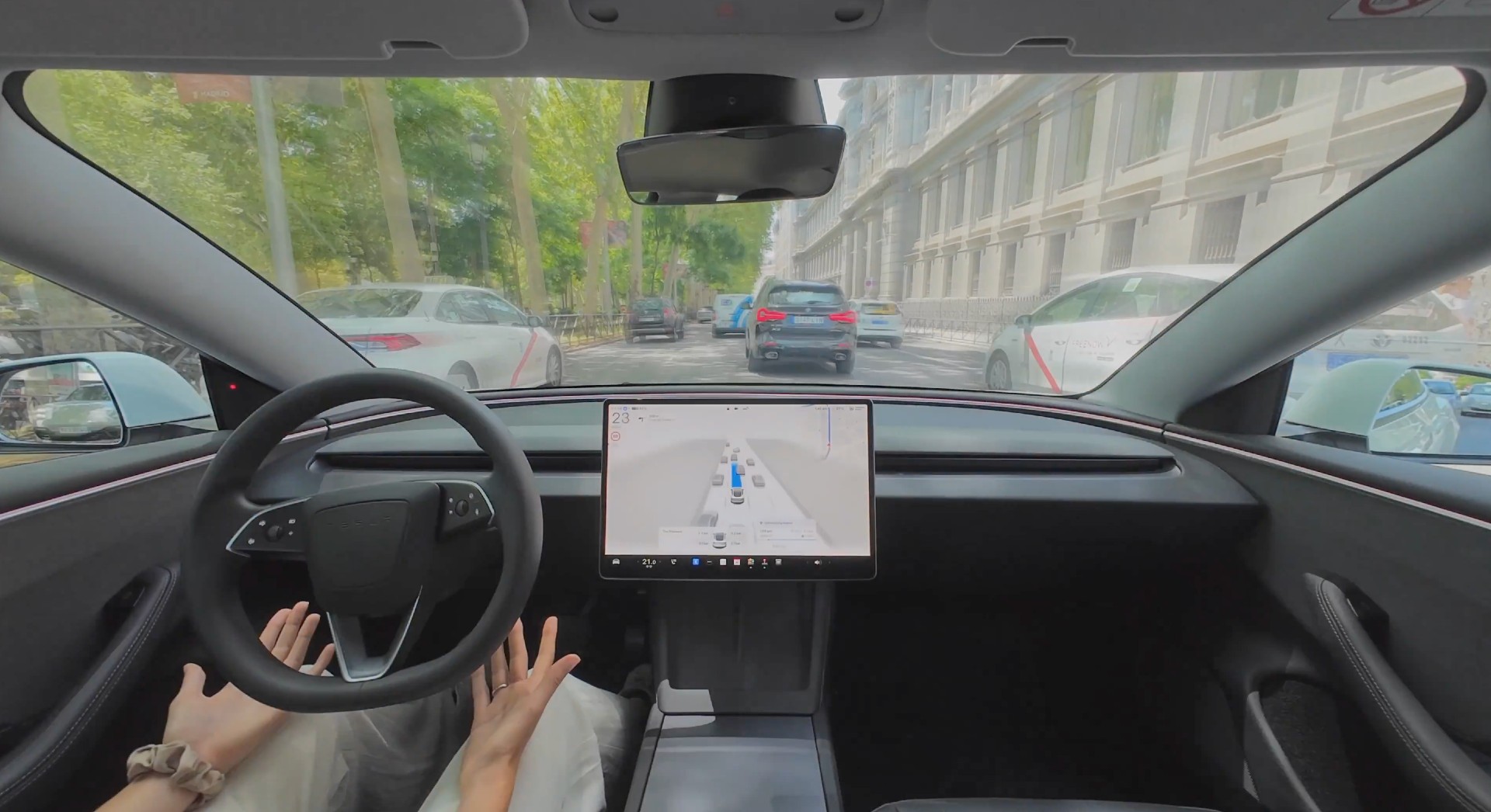

Investor's Corner
General Motors emphasizing faster electric vehicle launches after positive 2021 earnings
General Motors (NYSE: GM) is gearing up for a major shift in 2022 thanks to its evolving electric vehicle program, planning for record profit levels that could surge the company into a more well-rounded placement in an increasingly competitive sector. The automaker is preparing for faster vehicle launches, according to CEO Mary Barra, who said more models would come to the market at a quicker pace. GM reported its Earnings for Q4 and its guidance for 2022 last night, sharing expansive details for the coming years, including new models, production plans and start dates, and more information regarding GM’s Cruise investment.
In general terms, General Motors reported a strong Q4 and Full Year 2021 in terms of financials. GM’s 2021 full-year earnings included a net income of $10.019 billion, a net income margin of 7.9 percent, and revenue of over $127 billion, a $4.5 billion increase from 2020. For Q4, GM had a weaker quarter than it did in the same period in 2020. The company reported $33.584 billion in revenue for Q4 ’21, which is nearly $4 billion less than Q4 ’20. Net income also decreased, but the full-year figures and profits undoubtedly outshine the losses for the quarter.
“For the full year, we generated $127 billion in revenue, $14.3 billion in EBIT-adjusted, 11.3% EBIT-adjusted margin, $7.07 in EPS diluted adjusted, and $2.6 billion in adjusted automotive free cash flow,” GM CFO Paul Jacobson said. “In the fourth quarter, we generated $34 billion in revenue, $2.8 billion in EBIT-adjusted, 8.5% EBIT-adjusted margin, $1.35 in EPS diluted adjusted, and $6.4 billion in adjusted automotive free cash flow. Free cash flow in the quarter was largely driven by working capital rewind as we were able to complete and wholesale over 80,000 vehicles that had previously been built without certain components, as well as dividends from GM Financial.”
GM’s Earnings Call was the highlight of the evening as it shed new light on the automaker’s planned expansion of its electric vehicle lineup. “We also recognize that we need to launch more EVs faster,” CEO Mary Barra said during the call. GM plans to launch deliveries of the Cadillac LYRIQ in “less than 60 days.” The LYRIQ will join the GMC Hummer EV, which recently started deliveries, as GM’s two newest electric vehicles for consumer use. In the commercial sector, GM said that production of the BrightDrop EV600 will begin late this year at the company’s CAMI Assembly Plant in Ontario, Canada. The automaker said that the site currently has a production capacity of 30,000 vehicles and should be doubled by mid-decade.
GMC Hummer EV sports its massive size alongside full-size SUV
GM said that the Silverado, Equinox, and Blazer EVs will all begin deliveries in 2023. The three vehicles will contribute to GM’s plan to deliver 400,000 EVs in North America in 2022 and 2023. These plans are supplemented by battery cell and assembly capacity investments in Michigan, which were recently announced. These new facilities “will give [GM] more than 1 million units of EV capacity in North America by the end of 2025, and this includes 600,000 full-size trucks,” Barra added.
Interestingly, Barra held high regard for Cruise, a fully-autonomous ride-sharing company with investors such as GM, Honda, Softbank, Microsoft, and Walmart. Barra said that riding in a Cruise vehicle a couple of weeks ago was “the highlight of my career as an engineer and as the leader of General Motors.”
“It’s like having an experienced and attentive driver behind the wheel,” Barra said. “Now, as Cruise announced this morning, it is inviting members of the public to sign up for their own driverless rides through a waitlist on the Cruise website. This is the first truly driverless ride-hail service offered to members of the public in a dense urban environment. To maximize its learnings, Cruise will prioritize use cases that are a natural fit for autonomous ride-sharing.”
Barra believes that the first paid rides for Cruise could generate $50 billion by the end of the 2020s.
Semiconductor Forecast
“We saw improved semiconductor availability in the fourth quarter compared to the third quarter, which enabled us to increase our wholesale sequentially while substantially reducing our inventory of vehicles built without certain components,” Jacobson added. GM expects semiconductor availability to improve throughout 2022, reporting that the company has seen stabilization in the semiconductor environment. This leads GM to believe that it can reach a “normalized run rate toward the beginning of the third quarter [2022] with a target of around 800,000 units in North America on a quarterly basis.” This figure includes GM’s combustion engine vehicles.
Questions from Deutsche Bank analyst Emmanuel Rosner prompted Barra and other GM executives to give more information regarding their opinions of the semiconductor shortage and when it could begin to subside. Barra believes that, by the time Q3 and Q4 2022 roll around, “we’re going to be really starting to see the semiconductor constraints diminish.”
Analyst synopsis
GM’s Earnings Call was strong, giving investors more to be excited about in the way of its EV project and ability to avoid semiconductor issues. “We are big believers in the GM EV strategy as it’s all about converting 10%-15% of its customers to EVs by 2025 with 30 new EV models,” Wedbush analyst Dan Ives told us. “There are clear challenges, however, with massive resources dedicated towards EVs, we view this as the right move at the right time for Barra & Co.” In terms of keeping up with competitors, namely industry leader Tesla, Ives believes battery tech and GM’s exclusive Ultium platform is the roadmap to success for the Detroit company. “Ultium is the foundational piece of GM’s battery strategy and key to keep up in this EV arms race with Tesla leading the charge,” Ives added.
Ives has a “Buy” rating on GM stock with an $85 price target. Ives is ranked 59 out of 7,776 analysts on TipRanks.
GM shares were down 3.43 percent at the time of writing, trading at $52.22 per share.
Disclosure: Joey Klender is not a GM Shareholder.
I’d love to hear from you! If you have any comments, concerns, or questions, please email me at joey@teslarati.com. You can also reach me on Twitter @KlenderJoey, or if you have news tips, you can email us at tips@teslarati.com.
Quotes provided by the Motley Fool.

Investor's Corner
Tesla gets price target bump, citing growing lead in self-driving

Tesla (NASDAQ: TSLA) stock received a price target update from Pierre Ferragu of Wall Street firm New Street Research, citing the company’s growing lead in self-driving and autonomy.
On Tuesday, Ferragu bumped his price target from $520 to $600, stating that the consensus from the Consumer Electronics Show in Las Vegas was that Tesla’s lead in autonomy has been sustained, is growing, and sits at a multiple-year lead over its competitors.
CES 2026 validates Tesla’s FSD strategy, but there’s a big lag for rivals: analyst
“The signal from Vegas is loud and clear,” the analyst writes. “The industry isn’t catching up to Tesla; it is actively validating Tesla’s strategy…just with a 12-year lag.”
The note shows that the company’s prowess in vehicle autonomy is being solidified by lagging competitors that claim to have the best method. The only problem is that Tesla’s Vision-based approach, which it adopted back in 2022 with the Model 3 and Model Y initially, has been proven to be more effective than competitors’ approach, which utilizes other technology, such as LiDAR and sensors.
Currently, Tesla shares are sitting at around $433, as the company’s stock price closed at $432.96 on Tuesday afternoon.
Ferragu’s consensus on Tesla shares echoes that of other Wall Street analysts who are bullish on the company’s stock and position within the AI, autonomy, and robotics sector.
Dan Ives of Wedbush wrote in a note in mid-December that he anticipates Tesla having a massive 2026, and could reach a $3 trillion valuation this year, especially with the “AI chapter” taking hold of the narrative at the company.
Ives also said that the big step in the right direction for Tesla will be initiating production of the Cybercab, as well as expanding on the Robotaxi program through the next 12 months:
“…as full-scale volume production begins with the autonomous and robotics roadmap…The company has started to test the all-important Cybercab in Austin over the past few weeks, which is an incremental step towards launching in 2026 with important volume production of Cybercabs starting in April/May, which remains the golden goose in unlocking TSLA’s AI valuation.”
Tesla analyst breaks down delivery report: ‘A step in the right direction’
Tesla has transitioned from an automaker to a full-fledged AI company, and its Robotaxi and Cybercab programs, fueled by the Full Self-Driving suite, are leading the charge moving forward. In 2026, there are major goals the company has outlined. The first is removing Safety Drivers from vehicles in Austin, Texas, one of the areas where it operates a ride-hailing service within the U.S.
Ultimately, Tesla will aim to launch a Level 5 autonomy suite to the public in the coming years.
Investor's Corner
Tesla Q4 delivery numbers are better than they initially look: analyst
The Deepwater Asset Management Managing Partner shared his thoughts in a post on his website.

Longtime Tesla analyst and Deepwater Asset Management Managing Partner Gene Munster has shared his insights on Tesla’s Q4 2025 deliveries. As per the analyst, Tesla’s numbers are actually better than they first appear.
Munster shared his thoughts in a post on his website.
Normalized December Deliveries
Munster noted that Tesla delivered 418k vehicles in the fourth quarter of 2025, slightly below Street expectations of 420k but above the whisper number of 415k. Tesla’s reported 16% year-over-year decline, compared to +7% in September, is largely distorted by the timing of the tax credit expiration, which pulled forward demand.
“Taking a step back, we believe September deliveries pulled forward approximately 55k units that would have otherwise occurred in December or March. For simplicity, we assume the entire pull-forward impacted the December quarter. Under this assumption, September growth would have been down ~5% absent the 55k pull-forward, a Deepwater estimate tied to the credit’s expiration.
“For December deliveries to have declined ~5% year over year would imply total deliveries of roughly 470k. Subtracting the 55k units pulled into September results in an implied December delivery figure of approximately 415k. The reported 418k suggests that, when normalizing for the tax credit timing, quarter-over-quarter growth has been consistently down ~5%. Importantly, this ~5% decline represents an improvement from the ~13% declines seen in both the March and June 2025 quarters.“
Tesla’s United States market share
Munster also estimated that Q4 as a whole might very well show a notable improvement in Tesla’s market share in the United States.
“Over the past couple of years, based on data from Cox Automotive, Tesla has been losing U.S. EV market share, declining to just under 50%. Based on data for October and November, Cox estimates that total U.S. EV sales were down approximately 35%, compared to Tesla’s just reported down 16% for the full quarter. For the first two months of the quarter, Cox reported Tesla market share of roughly a 65% share, up from under 50% in the September quarter.
“While this data excludes December, the quarter as a whole is likely to show a material improvement in Tesla’s U.S. EV market share.“
Elon Musk
Tesla analyst breaks down delivery report: ‘A step in the right direction’
“This will be viewed as better than feared deliveries and a step in the right direction for the Tesla story heading into 2026,” Ives wrote.

Tesla analyst Dan Ives of Wedbush released a new note on Friday morning just after the company released production and delivery figures for Q4 and the full year of 2025, stating that the numbers, while slightly underwhelming, are “better than feared” and as “a step in the right direction.”
Tesla reported production of 434,358 and deliveries of 418,227 for the fourth quarter, while 1,654,667 vehicles were produced and 1,636,129 cars were delivered for the full year.
Tesla releases Q4 and FY 2025 vehicle delivery and production report
Interestingly, the company posted its own consensus figures that were compiled from various firms on its website a few days ago, where expectations were set at 1,640,752 cars for the year. Tesla fell about 4,000 units short of that. One of the areas where Tesla excelled was energy deployments, which totaled 46.7 GWh for the year.
🚨 Wedbush’s Dan Ives has released a new note on Tesla $TSLA:
“Tesla announced its FY4Q25 delivery numbers this morning coming in at 418.2k vehicles slightly below the company’s consensus delivery estimate of 422.9k but much better than the whisper numbers of ~410k as the…
— TESLARATI (@Teslarati) January 2, 2026
In terms of vehicle deliveries, Ives writes that Tesla certainly has some things to work through if it wants to return to growth in that aspect, especially with the loss of the $7,500 tax credit in the U.S. and “continuous headwinds” for the company in Europe.
However, Ives also believes that, given the delivery numbers, which were on par with expectations, Tesla is positioned well for a strong 2026, especially with its AI focus, Robotaxi and Cybercab development, and energy:
“This will be viewed as better than feared deliveries and a step in the right direction for the Tesla story heading into 2026. We look forward to hearing more at the company’s 4Q25 call on January 28th. AI Valuation – The Focus Throughout 2026. We believe Tesla could reach a $2 trillion market cap over the coming year and, in a bull case scenario, $3 trillion by the end of 2026…as full-scale volume production begins with the autonomous and robotics roadmap…The company has started to test the all-important Cybercab in Austin over the past few weeks, which is an incremental step towards launching in 2026 with important volume production of Cybercabs starting in April/May, which remains the golden goose in unlocking TSLA’s AI valuation.”
It’s no secret that for the past several years, Tesla’s vehicle delivery numbers have been the main focus of investors and analysts have looked at them as an indicator of company health to a certain extent. The problem with that narrative in 2025 and 2026 is that Tesla is now focusing more on the deployment of Full Self-Driving, its Optimus project, AI development, and Cybercab.
While vehicle deliveries still hold importance, it is more crucial to note that Tesla’s overall environment as a business relies on much more than just how many cars are purchased. That metric, to a certain extent, is fading in importance in the grand scheme of things, but it will never totally disappear.
Ives and Wedbush maintained their $600 price target and an ‘Outperform’ rating on the stock.








